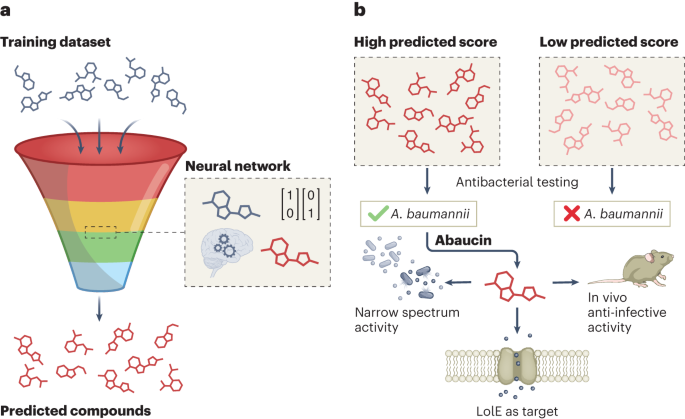Antibiotic identified by AI
(www.nature.com)
from narwhal@lemmy.ml to technology@lemmy.world on 17 Oct 2023 07:30
https://lemmy.ml/post/6603330
from narwhal@lemmy.ml to technology@lemmy.world on 17 Oct 2023 07:30
https://lemmy.ml/post/6603330
Sadly, I can’t seem to find the non paywalled version of the article ._.

threaded - newest
ipfs.io/…/bafyb4ig3rshu6ok4e65bsdcpemkde6gaakzvuu…
This is awesome. Thank you 🙏
God, I love the internet.
Wow, very cool! I also like that the they targeted hospital born infections, which are scary and often resistant to regular treatment.
Ooh - very cool. A. baumanii is a really nasty little fucker. It’s the A in ESKAPE, a list comprised of the 6 most virulent and antibiotic resistant pathogens out there. A. baumanii is also sometimes referred to as Iraqibacter because of its prevalence in US military personnel returning from Iraq. It’s a soil-borne bacteria that was local to the middle east, but has now been spread around the world by hitchhiking in people. One of the main reasons why it’s so difficult to kill is that it is gram negative, which means that it has both an outer and inner membrane, which makes it difficult for existing classes of antibiotics to penetrate into the cell. Some of the other notable gram negative bacteria are E. coli, Y. pestis (the bacteria responsible for the black plague), and C. trachomatis, the bacteria responsible for chlamydia.
This study is pretty significant because, in addition to targeting a nasty little fucker, it’s possible that the approach used could be repurposed to target a number of that nasty little fucker’s nasty little family, too.